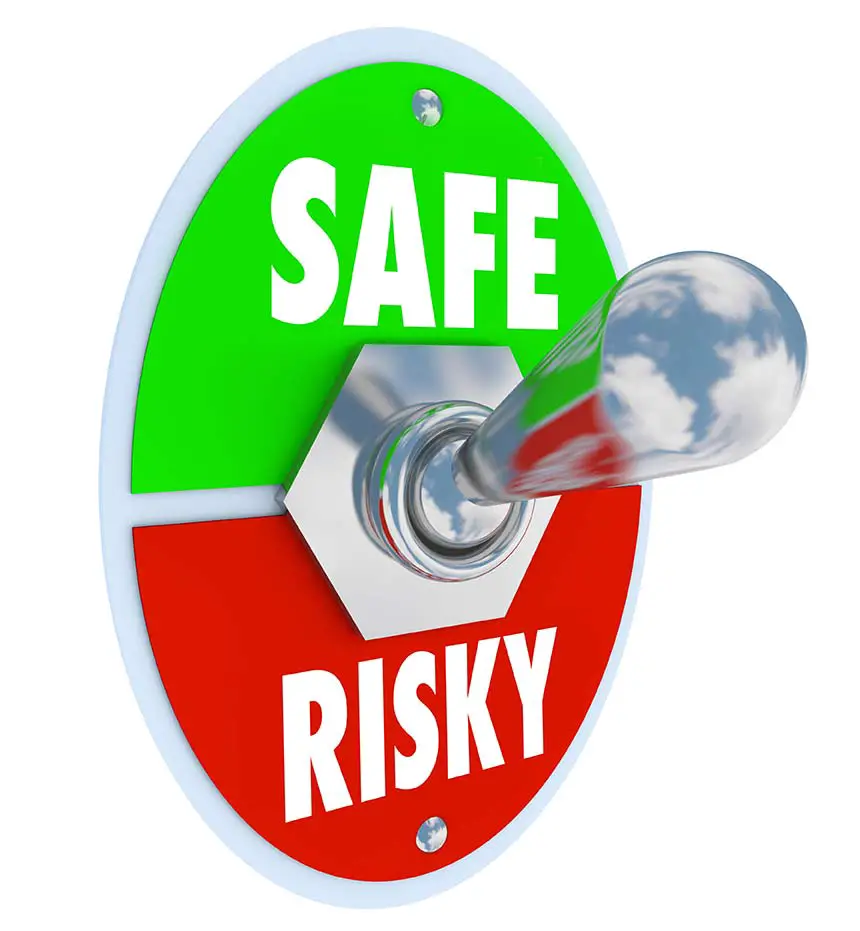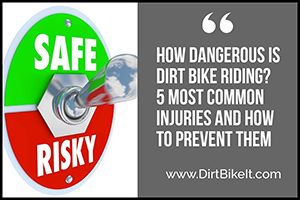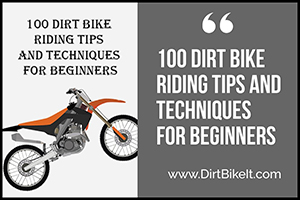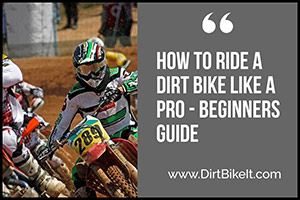How Dangerous is Dirt Bike Riding? 5 Most Common Injuries and How to Prevent Them

How Dangerous is Dirt Bike Riding? 5 Most Common Injuries and How to Prevent Them
Here we look at exactly how dangerous dirt bike riding can be, identifying the 5 most common injuries that can result from dirt bike riding, and providing advice on how to prevent these injuries. If you’re new to dirt bike riding or have just started to look into whether you should get into it or not, you probably have concerns over how safe it is. This can be doubly important to you if you have a young family and are looking to see whether or not you should get your children into it as a family sport.
Is Dirt Biking a Safe Family Activity?
You will likely have come across stories of dirt bike riders undergoing horrific injuries in the course of their rides. However, while dirt bike riding can undoubtedly be dangerous, you can eliminate most of its associated risks by taking a few simple safety precautions, and by making sure that you ride your dirt bike in the right context. By taking these measures you can significantly reduce the risks of injury and enjoy the sport along with your family in relative safety.
It is really important to put the dangers of dirt bike riding into perspective. We have to recognize that pretty much everything we do involves at least some level of risk. Swimming at the beach carries the risk of drowning; playing football carries the risk of serious injury; riding a bicycle carries the risk of getting in accidents; pretty much everything we do can harm us if things go wrong, everything except sitting at home playing video games and watching television all day, and who really wants that for themselves or their children? So, the real question is what is our tolerance level for the risks involved?
Of course, we want to protect our children from being harmed. The way to do this when it comes to dirt bike riding is by taking certain precautions, precautions that can eliminate the risk of harm to a large extent, making it a relatively safe activity.
5 Most Common Injuries and Why They Happen
Being aware of the most common dirt bike associated injuries can help us to know what to watch out for in the course of our rides. So, here’s a look at 5 such injuries and why they happen.
Broken Collarbone
A broken collarbone happens to be a very common injury resulting from dirt bike riding. The reason that it is so common is that when people fall off of dirt bikes, something that inevitably happens from time to time, they use their outstretched hands to break their falls, a natural reaction, resulting in great amounts of pressure being applied to their collarbones, making them liable to break. The higher the speed at the time of the fall, the greater the force that is applied to their outstretched arms, and the worse the injury to the collarbone is likely to be.
Most collarbone injuries undergo treatment with a splint and sling, something that needs to be worn all the time for a period between 4 weeks and 8 weeks. If the injury is of a more serious nature, it may require surgery. The injured person will need to consult a physiotherapist, one gradually introducing exercises into their regimen, helping them regain the full range of motions in their shoulders. Once the full range of movement is regained, the physio will provide strengthening exercises to restore the injured person to their original strength.
Shoulder Dislocation
The shoulder joints of human beings are complex structures. Shoulder dislocation during the course of dirt bike riding occurs for similar reasons to broken collarbones: breaking a fall with outstretched hands. However, in this case the collarbone remains intact, but a shoulder dislocation occurs instead. The ligament involved in a shoulder dislocation is a very weak section of one’s shoulder, its weakness making it prone to injury. This injury is also known as a shoulder separation. It can be excruciatingly painful.
The time it takes to recover from an injury of this nature depends on how severe the injury is. Exercises for rehabilitation cannot commence until the individual no longer experiences pain. This can take anywhere between a week or two (where injuries are mild or moderate) and a few months (where injuries are severe). Once the pain is gone, exercises will gradually be introduced, increasing in intensity over time, until one recovers the full range of movement in one’s shoulder without experiencing any pain.
Broken Wrist
Broken wrists are another injury caused by falling. The human wrist is a complex structure, with injuries to one’s wrist being extremely painful. In some cases, there can be a clean break in the wrist, but in cases of greater severity, there may be multiple breaks in the wrist bones.
A bad break in the wrist or a wrist sprain will likely take a substantial amount of time to recover from. Realignment of the bones may even require surgery. The broken wrist will then have to be placed within a cast for a period between 6 weeks and 8 weeks. Following this period in the cast, physiotherapy will typically be required, helping the individual to regain the full range of movement and strength in the wrist.
ACL (Anterior Cruciate Ligament) Rupture
The ACL connects the thigh to the shinbone. ACL ruptures can be cause by making jumps while keeping the knee bent, damaging this ligament.
Complete recovery from an ACL injury could take up to a year. Repairing the damage may require surgery, followed by a period involving physiotherapy. ACL ruptures demand a lot of dedication and patience from the injured individual. Only then will the healing process be successful.
Broken Ankle
Ankles are like wrists and shoulders, complex structures susceptible to injury during dirt bike riding. Ankle breakages can be caused by awkwardly falling from one’s bike as well as by collisions with other riders.
After a broken ankle, doctors could have to realign the bones correctly by moving them. If the injury is more complex, you may require surgery. After the surgery, the ankle will be put inside a cast lasting a period between 6 weeks and 12 weeks. Rehabilitation will need to be supervised by a seasoned physiotherapist, who will guide the process of restoring movement and strength to the ankle.
How to Prevent These Injuries from Happening?
While all the injuries stated above are treatable, prevention is better than cure. So, here’s how you can prevent these 5 common injuries from occurring in the first place.
How to Prevent Broken Collarbones
Over 50% of collarbone injuries occur at the bends in a motocross course. The best way to prevent a broken collar bone is by ensuring that you don’t fall off the bike. A second way to ensure this is by not colliding with other riders on the course. Be particularly careful when you reach bends.
Do everything you can to avoid serious neck injuries. The consequences and implications of neck injuries can be quite serious. To add protection to your neck, always wear a neck brace.
How to Prevent a Dislocated Shoulder
Once more, ensuring that you don’t fall off your bike is the surest way to prevent shoulder dislocations. However, falling is something of an inevitability when it comes to dirt bike riding. Retain an acute awareness of the riders in front of you. You may need to stop suddenly, something that can throw you over your bike’s handlebars, usually resulting in you landing on one of your shoulders.
For added protection, wear shoulder supports, particularly if you’ve sustained shoulder injuries before.
How to Prevent a Broken Wrist
Once again, not falling off your dirt bike is the best way to protect your wrists. If you’re racing on your bike, make sure you have your strategies for avoiding falls sorted out. Study the course carefully, identifying the areas where a fall is likely, and deciding how you are going to deal with them. At the same time, sometimes you fall despite your best efforts. So, always wear a wrist guard, giving added protection to your wrist. This will not only offer more support to your wrist but may be the difference between a break and just momentary pain.
How to Prevent an ACL Rupture
For this injury more than any other, prevention is better than cure. This is because after sustaining an injury of this nature, riders struggle to control their bikes even after undergoing extensive rehab. Riders struggle to perform tricks and jumps in particular.
A good piece of protective equipment to prevent ACL ruptures is a knee brace. Knee braces may feel uncomfortable and bulky to start off with, but once you get used to them, you don’t really notice they’re there. They can be a bit on the expensive side, but nothing should come in the way of your health.
How to Prevent Broken Ankles
Falling off your dirt bike while going at high speeds or falling after a heavy collision usually ends awkwardly for the body. The best way to prevent broken ankles is to re.main vigilant at all times, ensuring that you ride safely, concentrating fully on the race, avoiding unnecessary risks, wearing all the protective gear available.
You can add support to your ankle by wearing an ankle brace, giving your ankle added protection. Another piece of protective equipment you should invest in are high quality motocross boots, designed to offer added protection to your feet and ankles, reducing chances of injury to these very delicate areas.




